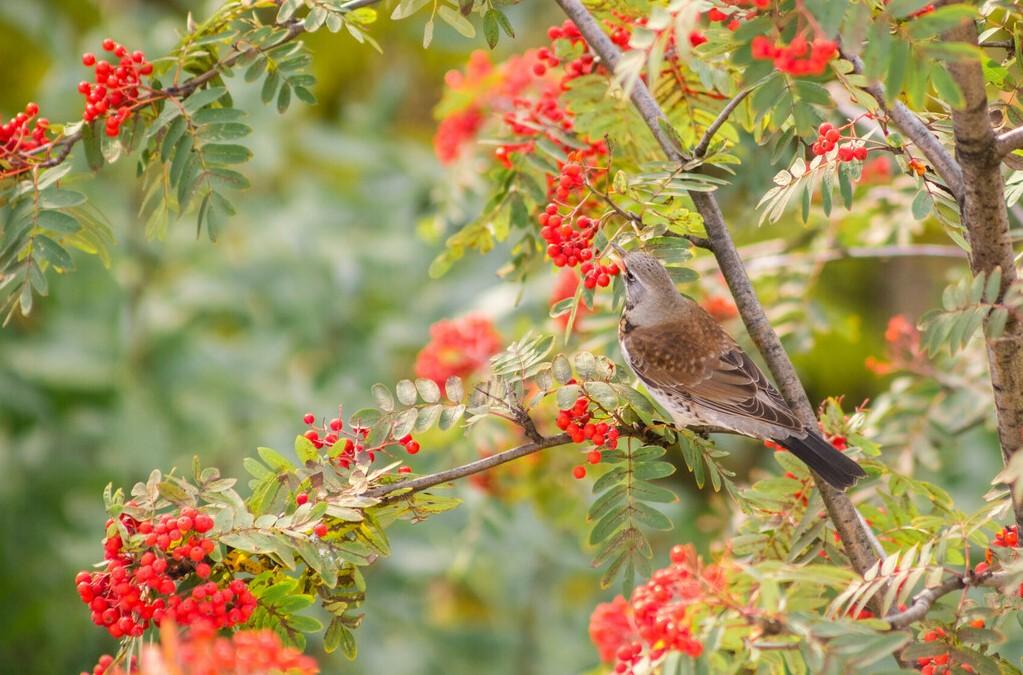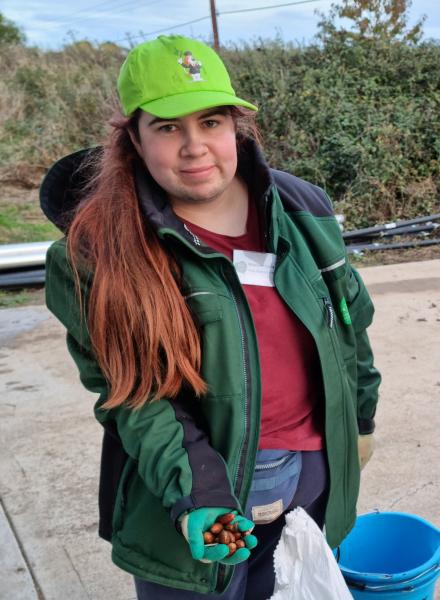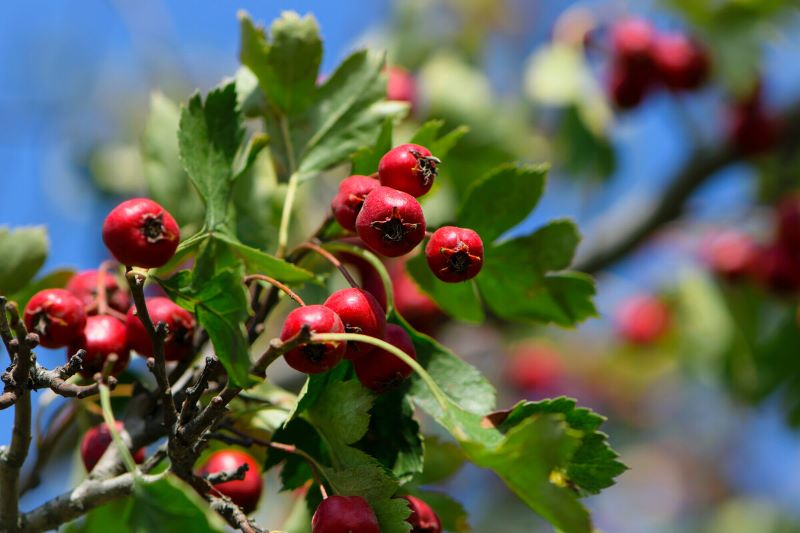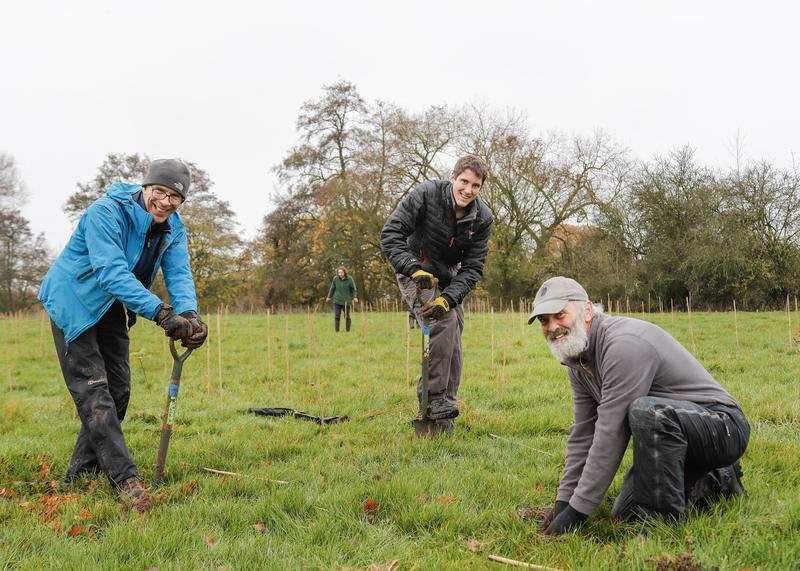
Collecting the next generation of trees for the Forest
With the help of willing and enthusiastic staff and volunteers, this autumn we have collected over 900kg of seed from our woodlands which will become the next generation of native broadleaves and important hedgerow species to help grow the Forest.
Seed saving and collecting
Seed collection from local trees is a sustainable way to develop seed-lines that are well adapted to a particular environment. During the process of gathering seed, it is important to work on the rule that we take no more than 50% to ensure that there is enough food for wildlife over the winter.
During the seed collecting season our team do not remove seed from every tree in the Forest. The parent trees are carefully selected and surveyed to ensure the next generation of trees traits are most suitable for the growing conditions of the Forest. For example, we want seed from trees that have shown evidence of drought resilience, or flood enduring and indeed, bountiful fruiting. It is imperative that seed collection is sourced from a variety of sites within the Heart of England Forest to ensure a range of genetic diversity.

Seed collection in the Forest
Seeds are currently being collected by our tree nursery team and over 40 volunteers. The seed collection season runs from early September to December and our volunteers have so far contributed over 360 hours to the programme.
The season kick started with the collection of the distinctive red and orange berries of rowan, (Sorbus aucuparia) as these usually start to disappear quite quickly in early autumn, eaten by birds, particularly thrushes and blackbirds. Because of the popularity of this berry with birds in particular, we ensure sufficient quantities are left for wildlife.
As the seed gathering season progressed into October, the brown ‘poms’ (or chequers as they are also named) of the wild service, (Sorbus torminalis) trees at Coxmere and Giddings Woods were collected.

During October, attention was also given to our important hedgerow shrubs such as the exotic looking bright pink pods of spindle (Euonymus europaea) with its striking orange seeds. Along with the somewhat smelly viburnum berries of guelder rose (Viburnum opulus) and angular black seeds of the wayfaring tree (Viburnum lantana) and not to forget the clusters of squelchy black berries of the ‘purging’ buckthorn (Rhamnus catharticus).
Throughout November our team concentrated on collecting hawthorn ‘haws’, as these usually stay on the bushes well into winter. To date we currently have 100kg of these delightful little berries. Now, looking further into December our volunteers hope to close the season by gathering the bright red holly berries. The good news is, there is still a chance to get involved! Find out more about becoming a volunteer and the different opportunities you could support.

The seed collection process
Step 1: Selecting where and what seeds make the collect
Several surveys of the woodland were completed by our Forestry, Tree Nursery, Biodiversity, and Volunteer teams. Once the areas of the healthiest trees had been identified, the teams tagged up individual trees with seed gathering potential. Once identified, the trees are then registered with Forestry Commission, so that the seeds collected can be traceable to origin.
Step 2: Collecting the seeds
Collection has taken place across the Forest to provide genetic diversity. The sites include Oak Wood, Middle Spernal, Alne Wood, Morgrove Coppice, Coughton Park, Coxmere, Giddings and Dorothy’s Wood. Staff and volunteers were prepped and equipped with gloves, wellies, and bags before revisiting the selected trees.
The collection process is slightly different depending on the species, for example, nuts such as acorns are collected from the ground. However, it is important to note that we do not collect the first fall, as these tend to be unviable to fool wildlife into eating these first before the good viable acorns drop early October. Our Forestry team strim the understory of the tree prior to collecting to make it easier to spot acorns on the ground. Another technique that was used this year involved laying tarpaulin on the ground and shaking branches with a telescopic pole, to encourage the seeds to fall.
Bunches of berries such as wild service ‘poms’ take careful snipping from the branches with secateurs. For hawthorn and singles berries the method was to pick and bag, this involves pulling off fruits and the branches with gloved hands, placing them into labelled containers.

Step 3: Cleaning and storing seeds
Ahead of storage the seed collectors remove as much of the leaves and twigs as possible.
Each of the species of seed needs to be stored and prepared slightly differently, for example acorns are recalcitrant which means that they need to be planted or stored in moist peat-free compost as soon as possible so that they do not dry out. They do not need to be stratified.
Wild service tree seeds on the other hand are stored in a cooler before transporting to the seed merchants for processing and stratification*. Most intricately the berries that are collected are soaked, then squidged to remove all the flesh before seeds are transferred to a mix of sharp sand and peat-free compose to stratify in the cold winter months.
All seeds are kept in the chiller after collection to slow down or stop growth/chitting.
* Stratification: the process whereby seed dormancy is broken in order to promote germination. For the stratification of seeds to be successful, it is necessary to mimic the exact conditions that they require when breaking dormancy in nature. Scarification involves softening the hard seed coat in some way to allow water to be imbibed into the seed, mixing the seed with a moist medium and keeping warm and/or cold for a certain time before sowing.
Supporting the seed collection season
Many people like to grow plants at home and wish to donate them to the Forest. However, we plant only native broadleaf trees, and these must be one or two-year-old whips as they have the best survival rate with our method of planting, which does not include watering. Also, everything that we plant is required to have a ‘plant passport’ so we know the seed source location and species, which gives us reassurance over pest and disease control. For this reason, we cannot accept domestic donations of trees, saplings, or seed donations.
If you would like to help, then why not join us as a volunteer? We are collecting holly seeds this month and we need as many gloved hands as possible. Find out more about the different volunteering opportunities.
If you cannot attend our volunteer sessions, please take a look at the other ways you can support the charity.
Together we can grow the Forest to benefit the environment, wildlife and people, for generations to come.




